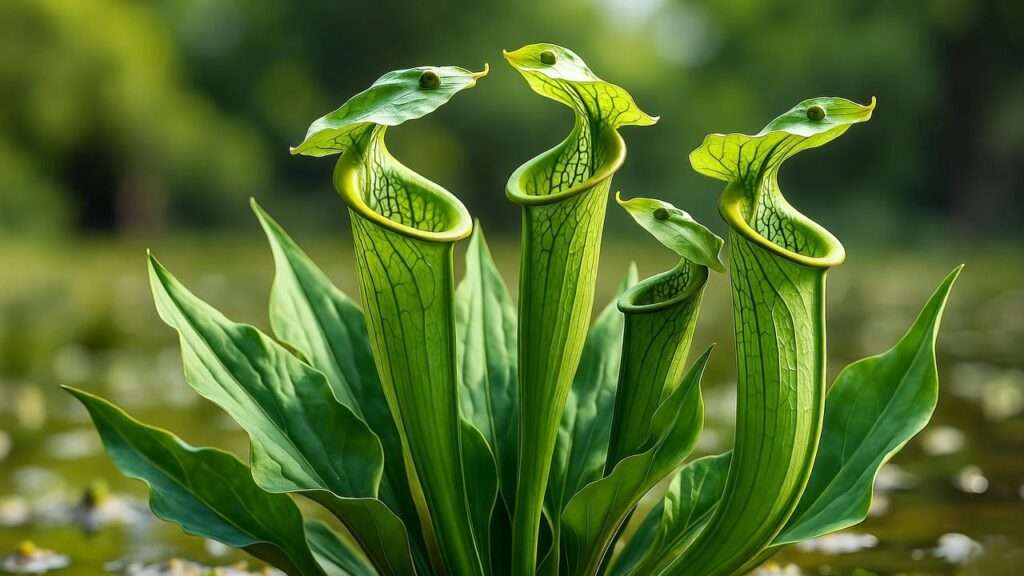Imagine a plant that looks like it slithered out of a fantasy novel, with vibrant, snake-like pitchers that lure insects to their doom. Meet the cobra lily plant (Darlingtonia californica), a carnivorous marvel that’s as captivating as it is low-maintenance. If you’re a plant enthusiast dreaming of adding an exotic, conversation-starting species to your collection, the cobra lily is your perfect match. But how do you ensure this unique plant thrives in your home or garden? In this comprehensive guide, we’ll share expert-backed tips to help you grow a healthy, vibrant cobra lily plant, from mimicking its boggy habitat to troubleshooting common issues. Whether you’re a seasoned gardener or a curious beginner, you’ll find everything you need to cultivate this carnivorous beauty successfully. 🌱
Native to the cool, wet bogs of Northern California and Oregon, the cobra lily thrives in conditions that might seem challenging but are surprisingly achievable with the right know-how. Let’s dive into the fascinating world of this insect-eating plant and unlock the secrets to keeping it happy and healthy! 🐍
What is a Cobra Lily Plant? 🐍
Overview of Darlingtonia Californica 🌱
The cobra lily plant, scientifically known as Darlingtonia californica, is a carnivorous species in the pitcher plant family. Often called the California pitcher plant, its name comes from its striking resemblance to a rearing cobra, complete with tubular, pitcher-shaped leaves and a forked “tongue” (actually a modified leaf structure). These pitchers feature translucent “windows” that confuse insects, trapping them inside where they’re digested for nutrients. Native to the Pacific Northwest, cobra lilies grow in nutrient-poor, acidic bogs, relying on their carnivorous nature to supplement their diet. 🌿
Why Grow a Cobra Lily? 🌟
Why choose a cobra lily for your plant collection? Its unique appearance makes it a showstopper for any garden or indoor setup. Beyond aesthetics, cobra lilies are relatively low-maintenance once their specific needs are met, making them ideal for adventurous gardeners. They’re also educational, offering a front-row seat to nature’s ingenuity as they trap and digest insects. For families, they spark curiosity in kids, while plant enthusiasts appreciate their rarity and challenge. Growing a cobra lily is rewarding and adds a touch of the wild to your space. 🌍
Understanding the Cobra Lily’s Natural Habitat 🌍
Native Environment 🏞️
Cobra lilies thrive in the cool, boggy wetlands of Northern California and Southern Oregon, where they grow in nutrient-poor, acidic soils alongside streams or seeps. These environments are characterized by constant moisture, cool temperatures, and minimal competition from other plants. According to the International Carnivorous Plant Society, cobra lilies are uniquely adapted to these conditions, with roots that tolerate cold, running water and pitchers that function as both traps and nutrient absorbers. Mimicking this habitat is key to successful cultivation. 🌊
Key Environmental Factors 🌡️
To grow a thriving cobra lily, you must replicate its natural conditions:
- Temperature: Cobra lilies prefer cool climates, ideally between 50-75°F (10-24°C). They struggle in temperatures above 80°F, making them less suited for hot climates without intervention.
- Soil: Use a nutrient-poor, acidic mix like sphagnum moss, perlite, and sand to mimic boggy soils.
- Water: Constant moisture is essential, but only with distilled, rainwater, or reverse-osmosis water to avoid mineral buildup.
- Light: Bright, indirect sunlight or partial shade (4-6 hours daily) supports healthy growth.
Expert Insight: Botanist Dr. Barry Rice, a carnivorous plant specialist, emphasizes that “cobra lilies are sensitive to root temperature, so keeping their roots cool is as critical as providing the right light.” Understanding these factors ensures your cobra lily flourishes. 🌞
How to Grow a Cobra Lily Plant: Step-by-Step Guide 🌱
Choosing the Right Location ☀️
Cobra lilies can thrive indoors or outdoors, but location is critical. Outdoors, choose a shaded patio or garden spot with cool temperatures and protection from intense afternoon sun. Indoors, a terrarium or greenhouse with controlled conditions works best. To maintain cool roots, place pots on a cool surface like stone or use a tray system with chilled water. For example, a grower on the Savage Garden Reddit community shared success by placing their cobra lily near a north-facing window with a small fan for air circulation. 🌬️
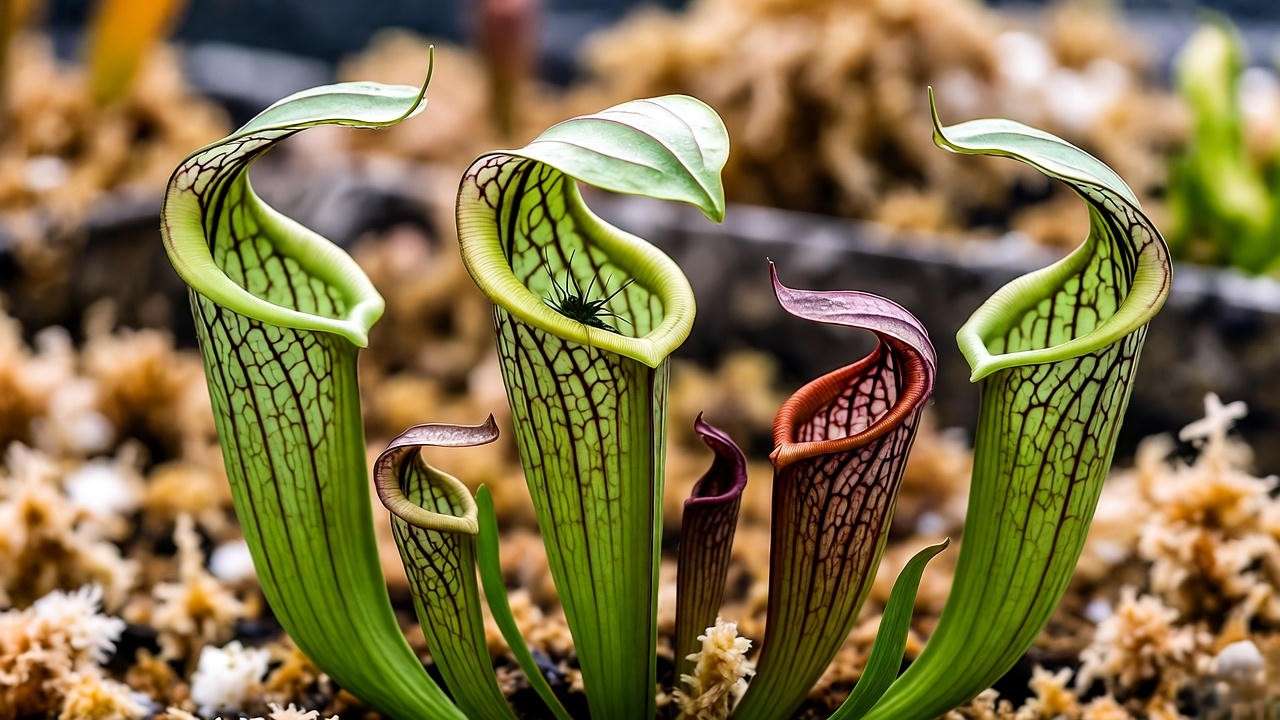
Selecting the Perfect Pot and Soil 🪴
Choose a plastic or ceramic pot with excellent drainage to prevent waterlogging. A 6-8 inch pot is ideal for young plants, while mature ones may need larger containers. For soil, mix equal parts live sphagnum moss, perlite, and coarse sand to create a well-draining, acidic medium. Avoid standard potting soils or fertilizers, as they can harm the plant’s sensitive roots. The International Carnivorous Plant Society recommends this mix for optimal aeration and moisture retention. 🚫
Planting Your Cobra Lily 🌿
- Prepare the pot: Fill with the soil mix, leaving 1 inch of space at the top.
- Plant the roots: Gently place the cobra lily’s roots into the soil, ensuring they’re covered but not compacted.
- Water thoroughly: Use distilled water to soak the soil, then place the pot in a tray with 1-2 inches of water.
- Cool the roots: If outdoors, consider double-potting with a larger container filled with wet sphagnum moss to insulate roots.
Case Study: A California-based grower reported thriving cobra lilies by using a tray system with chilled rainwater, mimicking the plant’s natural bog environment. This setup kept roots cool even during warm summers. 🌡️
Essential Cobra Lily Care Tips 💧
Watering Needs 💦
Cobra lilies demand consistently moist soil, but the water quality is non-negotiable. Use distilled, rainwater, or reverse-osmosis water to prevent mineral buildup, which can damage roots. The tray method is ideal: keep 1-2 inches of water in a tray beneath the pot, checking daily to ensure it never dries out. Overwatering is rare, but ensure proper drainage to avoid root rot. The Royal Horticultural Society notes that “carnivorous plants like the cobra lily are adapted to wet conditions, but stagnant water can be detrimental.” 💧
Light Requirements ☀️
Cobra lilies need 4-6 hours of bright, indirect sunlight daily. Outdoors, place them in partial shade, avoiding harsh midday sun. Indoors, use LED or fluorescent grow lights (10,000-15,000 lumens) positioned 12-18 inches above the plant. Rotate the pot weekly to ensure even light exposure. A grower from Oregon shared on a gardening forum that supplementing natural light with a grow light during cloudy winters kept their cobra lily’s pitchers vibrant. 🌞
Temperature and Humidity 🌡️
Maintain temperatures between 50-75°F and humidity at 60-80%. For indoor setups, use a humidifier or place the pot in a terrarium. To keep roots cool, avoid placing pots on warm surfaces like windowsills. A simple hack is to place a small fan nearby for air circulation, preventing heat buildup. In hot climates, consider chilling the tray water with ice packs during summer. ❄️
Feeding Your Cobra Lily 🐞
In their natural habitat, cobra lilies trap insects like flies and beetles using their pitchers’ translucent windows and slippery interiors. Outdoors, they typically catch enough prey on their own. Indoors, you can optionally feed them small insects (e.g., fruit flies or mealworms) once a month, but avoid overfeeding, as it can cause pitcher rot. Expert Tip: Carnivorous plant grower Peter D’Amato, author of The Savage Garden, advises, “Let the plant do its job—overfeeding can stress it.” 🐜
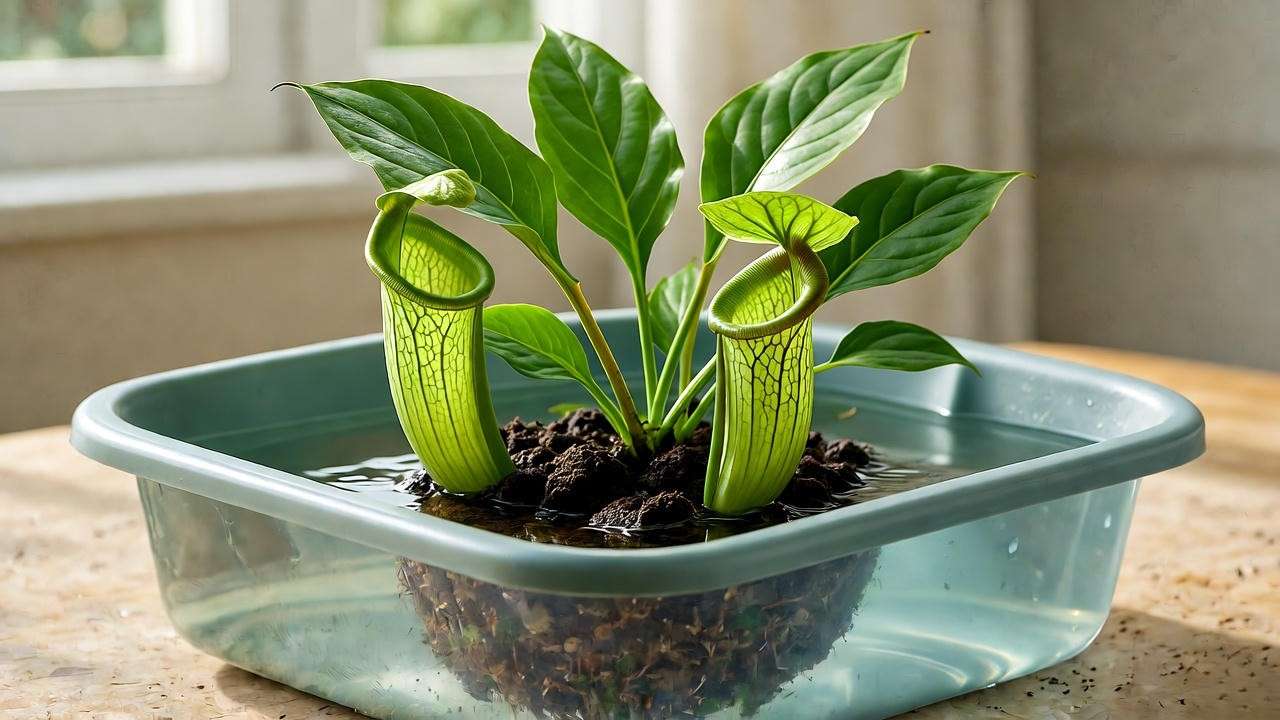
Common Cobra Lily Problems and Solutions 🛠️
Caring for a cobra lily plant can be rewarding, but even experienced growers encounter challenges. Here are the most common issues and their solutions to keep your plant thriving. 🌱
Yellowing or Browning Pitchers 🍂
- Causes: Yellowing or browning pitchers often result from overwatering, poor water quality, or insufficient light. Mineral-heavy tap water can accumulate in the soil, stressing the plant, while low light reduces photosynthesis, weakening pitchers.
- Solutions: Switch to distilled or rainwater and ensure the tray method keeps soil moist but not soggy. Increase light exposure to 4-6 hours of bright, indirect sunlight or use a grow light. Trim dead pitchers to encourage new growth. Check soil pH (ideal: 4.5-5.5) to rule out alkalinity issues.
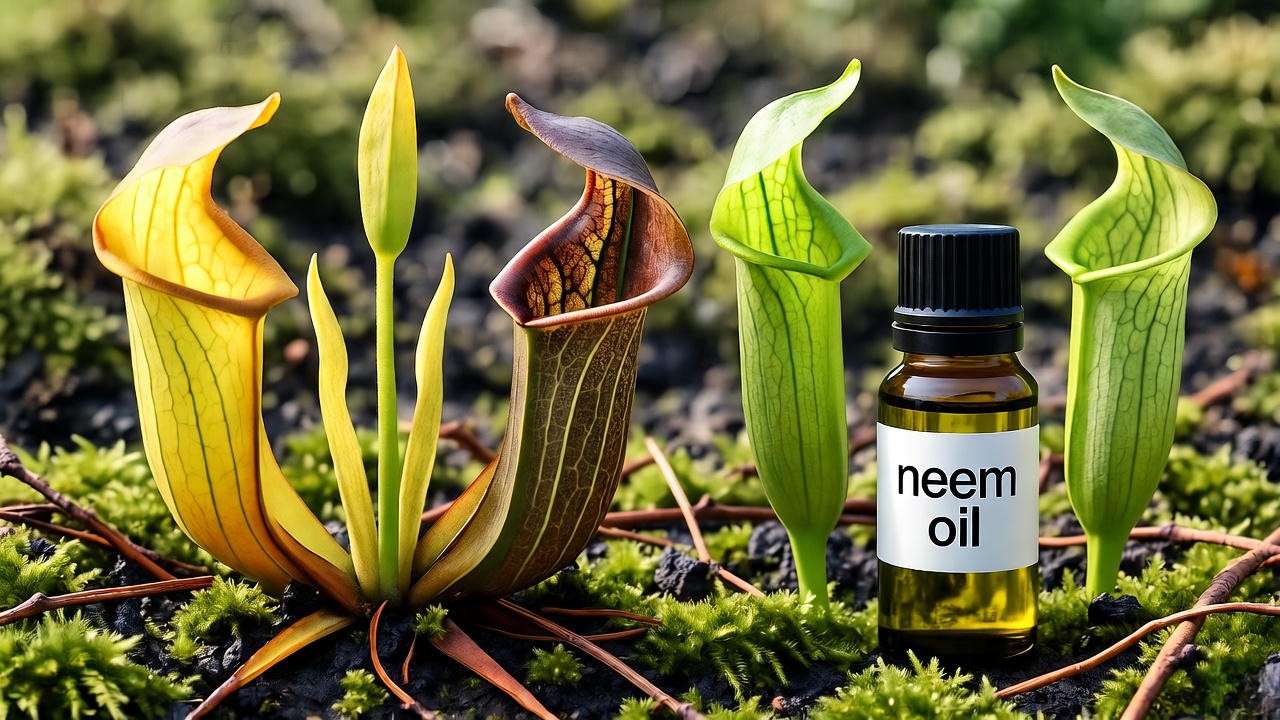
Root Rot 🚨
- Causes: Poor drainage or overly compact soil can lead to root rot, especially if the pot lacks sufficient aeration or sits in stagnant water.
- Solutions: Repot the cobra lily in a fresh mix of sphagnum moss, perlite, and sand. Ensure the pot has drainage holes and use the tray method to maintain consistent moisture without waterlogging. If rot is detected, trim affected roots with sterilized scissors and repot immediately.
Pest Issues 🐜
- Common Pests: Aphids, spider mites, and fungus gnats can occasionally target cobra lilies, especially in humid indoor setups.
- Solutions: Use organic treatments like neem oil or insecticidal soap, applied sparingly to avoid clogging pitchers. For fungus gnats, reduce soil moisture slightly and use sticky traps. Regular inspection and good air circulation prevent infestations.
| Symptom | Cause | Solution |
|---|---|---|
| Yellowing pitchers | Poor water quality, low light | Use distilled water, increase light exposure |
| Soft, mushy roots | Poor drainage, overwatering | Repot with well-draining mix, ensure proper drainage |
| Small insects on leaves | Aphids, spider mites | Apply neem oil, improve air circulation |
Expert Insight: The International Carnivorous Plant Society recommends regular monitoring, as “early intervention is key to preventing minor issues from becoming fatal for carnivorous plants like the cobra lily.” 🩺
Propagating Cobra Lily Plants 🌱
Propagating your cobra lily plant is a fantastic way to expand your collection or share this unique species with fellow plant enthusiasts. Here’s how to do it successfully. 🌿
Methods of Propagation 🌿
- Division: The most reliable method involves dividing mature plants during repotting. This works best for plants with multiple growth points or “crowns.”
- Seeds: Growing cobra lilies from seeds is possible but challenging due to slow germination (up to 2 years) and specific stratification requirements (cold, moist conditions for 4-6 weeks).
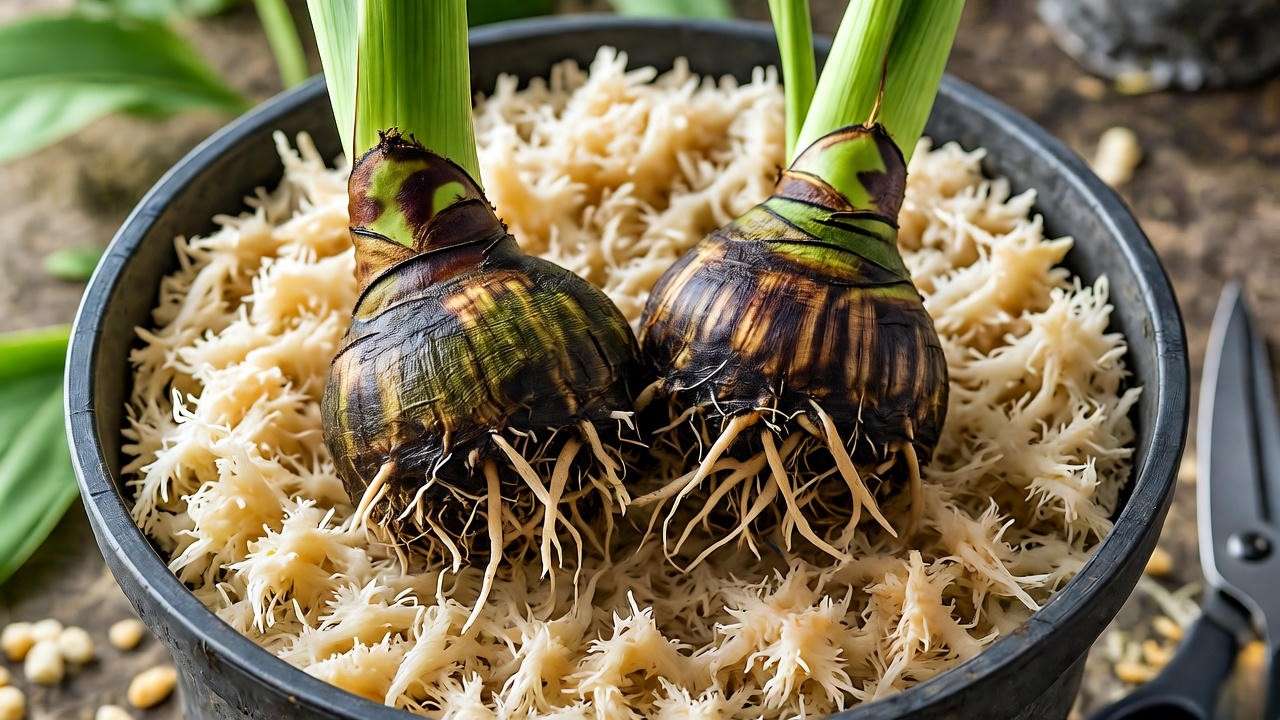
Step-by-Step Guide to Division 🌱
- Timing: Perform division in early spring, just before the growing season.
- Prepare Tools: Use sterilized scissors or a knife to prevent infection.
- Remove the Plant: Gently lift the cobra lily from its pot, shaking off excess soil.
- Divide the Rhizome: Identify natural divisions in the rhizome and carefully separate them, ensuring each section has roots and a growth point.
- Repot: Plant each division in a fresh sphagnum moss-perlite-sand mix, following the planting steps outlined earlier.
- Care Post-Division: Keep soil moist, maintain cool temperatures, and avoid direct sunlight for 2-3 weeks to reduce stress.
Example: A grower on Reddit’s r/SavageGarden shared that dividing their 3-year-old cobra lily resulted in three healthy plants, each thriving after a month of careful monitoring in a shaded terrarium. 🌟
Best Practices: Keep tools sterile and handle roots gently to avoid damage. Patience is key, as divisions may take weeks to establish. 🌱
Seasonal Care for Cobra Lily Plants 📅
Cobra lilies require tailored care depending on the season to mimic their natural bog environment. Here’s how to adjust your care routine year-round. 🌞❄️
Spring and Summer Care 🌞
- Watering: Increase watering to keep the soil consistently moist, as warmer weather increases evaporation. Check the tray daily to maintain 1-2 inches of distilled water.
- Pest Monitoring: Watch for pests like aphids, as humidity and warmth attract them. Use neem oil preventatively if needed.
- Ventilation: Ensure good air circulation to prevent overheating, especially in greenhouses or terrariums. A small fan can help.
Fall and Winter Care ❄️
- Dormancy: Cobra lilies enter a semi-dormant state in winter, slowing growth. Reduce watering slightly, keeping the soil just moist, and avoid letting the tray dry out completely.
- Temperature: Protect plants from freezing by moving them indoors if temperatures drop below 40°F. A cool garage or basement with grow lights works well.
- Light: Maintain 4-6 hours of indirect light, supplementing with grow lights if natural light is limited.
Expert Insight: The Royal Horticultural Society advises that “carnivorous plants like the cobra lily benefit from a rest period in winter, mimicking their natural cycle to promote longevity.” 🌬️
Fun Facts About Cobra Lily Plants 🐍
The cobra lily plant is as fascinating as it is beautiful. Here are some intriguing facts to deepen your appreciation:
- Unique Trapping Mechanism: The cobra lily’s pitchers have translucent “windows” that confuse insects, leading them deeper into the trap where they drown in digestive enzymes.
- Cultural Significance: Native American tribes in the Pacific Northwest historically recognized the cobra lily’s unique appearance, though no direct uses are widely documented.
- Comparison to Other Carnivores: Unlike Venus flytraps, which snap shut, or sundews, which use sticky dew, cobra lilies rely on passive trapping, making them a low-energy predator.
- Rare in the Wild: Due to habitat loss, cobra lilies are considered a sensitive species in some areas, making home cultivation a way to preserve their legacy.
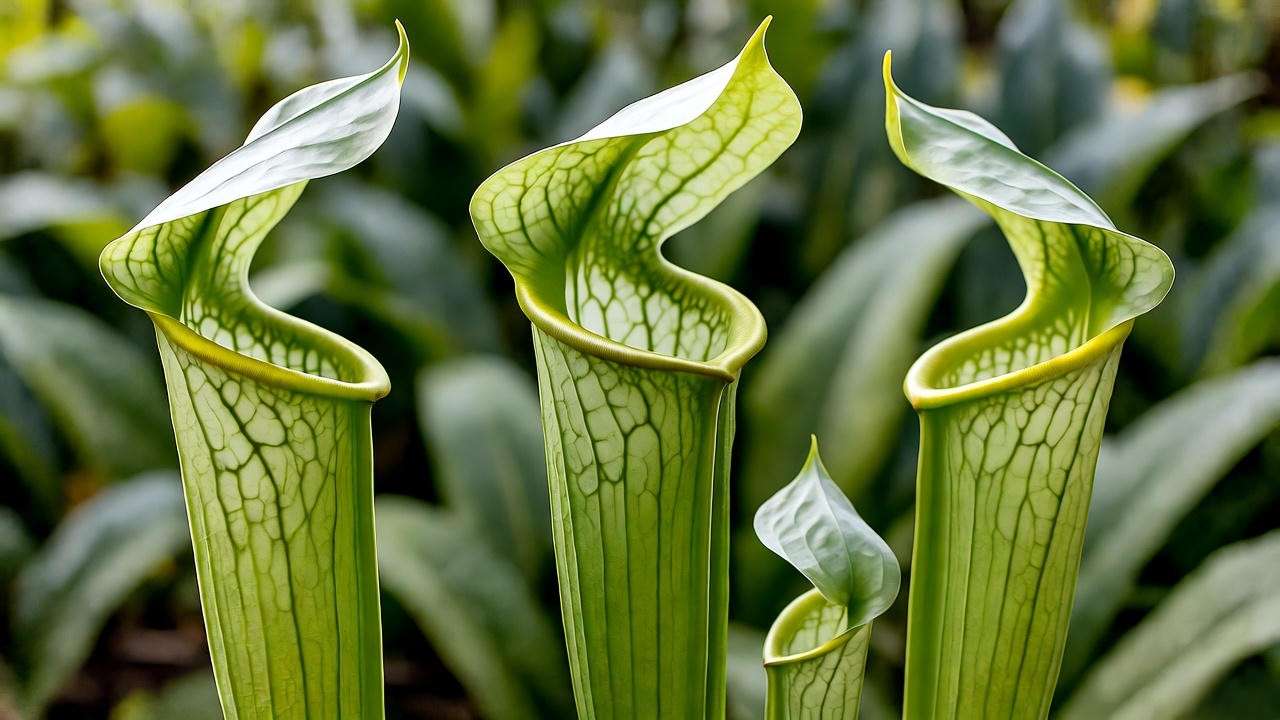
These tidbits make the cobra lily a conversation starter and a must-have for plant lovers! 🌟
FAQs About Cobra Lily Plant Care ❓
Q1: Can cobra lilies grow indoors?
A: Yes, cobra lilies thrive indoors in a terrarium or near a cool, bright window with high humidity (60-80%) and grow lights if needed. Ensure roots stay cool using the tray method. 🌱
Q2: How often should I water my cobra lily?
A: Keep the soil consistently moist using the tray method with 1-2 inches of distilled or rainwater. Check daily, especially in warm weather, to prevent drying out. 💦
Q3: Why are my cobra lily’s pitchers turning black?
A: Blackening pitchers may indicate overwatering, poor water quality, or fungal issues. Use distilled water, ensure proper drainage, and trim affected pitchers to prevent spread. 🩺
Q4: Do cobra lilies need fertilizer?
A: No, cobra lilies obtain nutrients from trapped insects. Fertilizers can harm their roots and should be avoided. 🚫
Q5: How long do cobra lilies live?
A: With proper care, cobra lilies can live for many years, often 5-10 years or more, producing new pitchers annually. 🌿
Word count: ~220 words
Conclusion: Your Path to a Thriving Cobra Lily 🌿
Growing a cobra lily plant is a rewarding journey that brings a slice of nature’s wild ingenuity into your home or garden. By providing distilled water, bright indirect light, cool temperatures, and a well-draining soil mix, you’ll create the perfect environment for this carnivorous beauty to thrive. Monitor for common issues like yellowing pitchers or pests, and adjust care seasonally to mimic its natural bog habitat. Whether you’re dividing a mature plant or marveling at its insect-trapping prowess, the cobra lily is a unique addition to any collection. 🌱
Ready to start? Share your cobra lily journey with fellow plant enthusiasts in online communities like r/SavageGarden or explore our related guides on Venus Flytrap Care or Best Soil Mixes for Carnivorous Plants. With these expert tips, your cobra lily will be a stunning, thriving centerpiece in no time! 🐍

